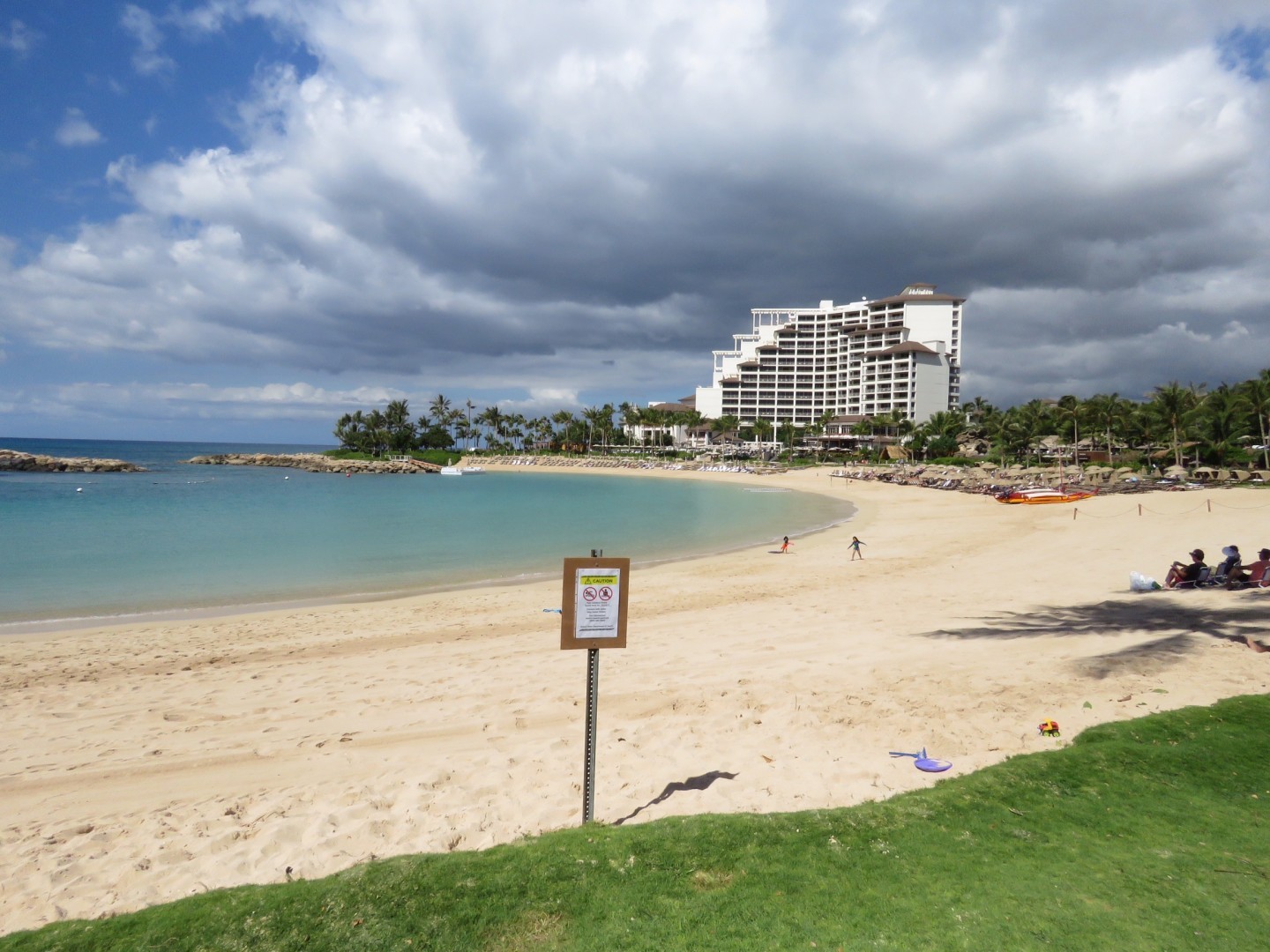
The Oahu Chapter has just received some well earned recognition for their efforts to help keep Hawaii waters clean and safe through Surfrider’s Blue Water Task Force (BWTF) and Ocean Friendly Gardens (OFG) programs. Local news program Hawaii Now followed Oahu’s BWTF Coordinator Christina Comfort to the beach and put together this great short video of her collecting a water sample and explaining why having current water quality information is so important to keep beachgoers safe at the beach. Check out the video and read Christina’s detailed summary of their BWTF water testing program below.
Oahu Chapter Coordinator Rafael Bergstrom is also featured in this Hawaii Now video explaining how the chapter implements their Ocean Friendly Gardens program to reduce the impacts of urban runoff and to create beautiful, sustainable gardens that provide food and native habitat.
Both videos were featured as Earth Week specials on local TV stations and were a great recognition for everything the Oahu Chapter volunteers accomplish throughout the year to protect clean water and healthy beaches. Well done Surfrider Oahu!
New BWTF program on Oahu extends coverage of water quality monitoring programs to protect public health at the beach
Christina Comfort
Clean and unpolluted coastal water is essential to swimmers, surfers, fisherfolk, and the multitude of organisms that make up a healthy coastal marine ecosystem. One concerning source of pollution that affects our coastal waters is untreated waste that can leach out of cesspools. Cesspools are a form of waste disposal without any processing or filtering of household waste, which means that untreated sewage can leach out of cesspools and into nearby ground and surfaces waters. This type of waste disposal is not ideal, but unfortunately it is quite common in Hawaii. This is why there is a need to inform ocean users in Hawaii about areas that may be affect by fecal pollution coming from cesspools so they can take action to protect their health.
The Hawaii Department of Health monitors beaches on Oahu for bacterial indicators of fecal pollution, but they cannot cover every public beach or coastal access site. To help meet this public health need, the Oahu Chapter has re-launched our Blue Water Task Force water testing program to extend the coverage of monitoring efforts with citizen science. Basically we are helping to provide water quality information at more beaches, more often, so beachgoers and those who love to swim, surf, paddle and play in the water have the information they need to avoid getting sick.
The Blue Water Task Force (BWTF) is the Surfrider Foundation’s volunteer water testing program. BWTF volunteers measure fecal indicator bacteria in beach and coastal waters, which if present, can indicate infective agents in the fecal pollution that make people sick. In our new Oahu program, volunteers sample beach and coastal recreational waters at approximately a dozen locations including beaches in Honolulu, on the windward side, and on the north shore. Many (though not all) of the sites are from areas where there is a high concentration of cesspools in the nearby neighborhoods.
After collecting water, we take the samples to a lab at Hawaii Pacific University in Kane’ohe, where we test each sample for the presence of the fecal indicator bacteria, Enterococcus. We feed any bacteria in the water with a specialized nutrient mixture, or reagant, and let the samples incubate overnight. If Enterococcus is present in the water sample, they will multiply and interact with the reagant and give off a UV signal. After a 24 hour incubation period, we identify how many bacteria were in the original sample based on counts under a UV light. The bacterial counts for each beach are available the day after samples are collected, and the results are posted to the BWTF website. See the beaches we are sampling and all our results here.
While some beaches have been testing clean, some sites have shown concerning results. The stream outflows at Kahalu’u (Kane’ohe, HI) and Anahola stream (Haleiwa, HI) have consistently had bacterial counts well above the Hawaii beach advisory threshold meant to protect public health. Other sites such as Waimanalo Bay Beach, Aina Haina, and Pua’ena point have tested high as well.
As our program develops and we continue to test, we’ll be able to make better scientific judgments about the influence of tides, rainfall, and other environmental conditions on the presence and amount of fecal indicator bacteria at the beaches we are monitoring. Our plan is to expand the Oahu BWTF program to cover approximately 20 sites and to increase our sampling frequency to weekly testing.
If you’re located on Oahu, get involved with the Surfrider Oahu’s Blue Water Task Force by following us on Facebook and come to a monthly meetings – First Wednesdays of the month at 6:30 PM!
